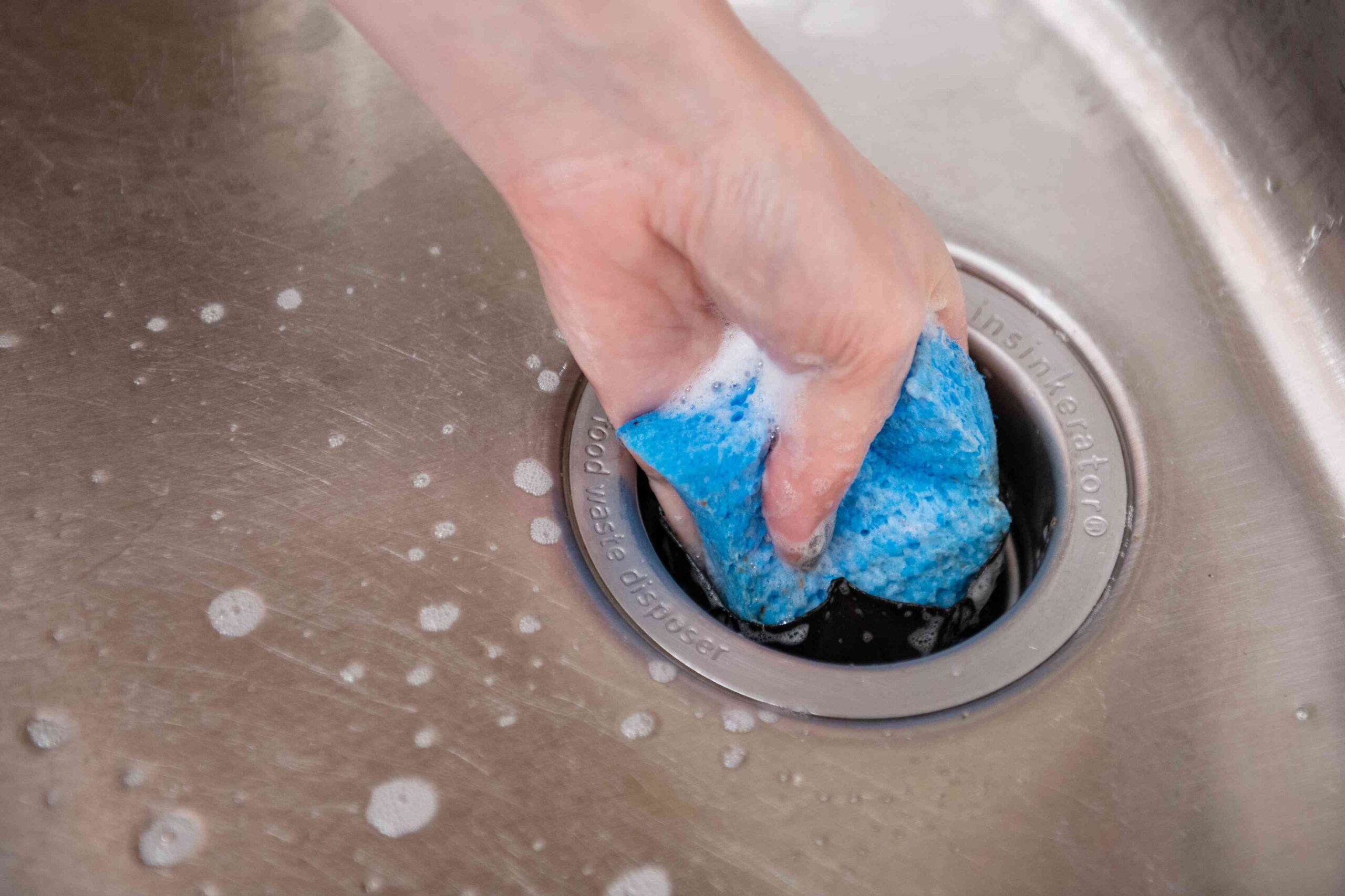Key Takeaways
- A quick weekly cleaning will help prevent clogs and get rid of garbage disposal odors.
- Avoid dumping large amounts of grease, coffee grounds, or too much food waste at once..
- Use plenty of water while grinding waste to flush the particles through the appliance and plumbing pipes.
A garbage disposal is a welcome appliance in any kitchen sink to handle vegetable peels and food waste, but clogs can easily develop if you overload it with grease or fibrous materials like corn husks, egg shells, or coffee grounds. These clogs produce strong odors and may result in expensive visits from a plumber.
Learn how often to clean your garbage disposal and the proper methods to clean it to prevent clogs.
How Often Should You Be Cleaning Your Garbage Disposal?
If you rely on your disposal heavily, give a good cleaning at least every other week.
Over time, a smelly slime builds up in the grinding container of every garbage disposal. While this won’t cause a clog, it will emit a foul odor. The slime accumulates on the underside of the rubber baffle at the drain opening and the smooth, sloped area at the top of the grinding chamber.
You can do a quick freshening clean with citrus peels and ice or diluted chlorine bleach whenever you catch a smelly odor. Do a more thorough, deep clean at least monthly.
Want more cleaning and organizing tips? Sign up for our free daily newsletter for the latest hacks, expert advice, and more!
How to Clean a Garbage Disposal
You probably have all of the garbage disposal cleaners you need right in your kitchen pantry. While you can purchase commercial cleaners, all you need is dishwashing liquid, distilled white vinegar, baking soda, and a scouring sponge to do a thorough cleaning.
- Cut the power. Unplug the disposal from the outlet under the sink, or turn off the disposal’s breaker in your home’s breaker box.
- Scrub the surfaces. Dampen the kitchen sponge and place a few drops of dishwashing liquid on the abrasive side. Scrub thoroughly under the rubber disposal baffle and around the drain rinsing the sponge frequently to remove the gunk.
- Clean the chamber. Reach down into the disposal and scrub around the top of the grinding chamber using the soapy sponge. Rinse it often and continue scrubbing until the sponge pulls up no more gunk and the disposal’s surfaces feel clean to your touch.
- Add baking soda and vinegar. Pour 1/2 cup of baking soda into the garbage disposal and then slowly add 1 cup of distilled white vinegar. If you have a double sink, add the same amounts to both drains.
- Soak. Place the sink stopper over the disposal opening to contain the fizzing mixture. If you have a double sink, cover both drain openings. Wait at least 10 minutes to give the cleaners time to work.
- Flush for one minute. Restore power to the disposal, remove the stopper(s), and flush the disposal with hot water running at full force for at least a whole minute while the garbage disposal is running.
5 Tips for Regular Garbage Disposal Maintenance
- Always turn on the cold water first and then the disposal. Continue running the cold water for 5 or 10 seconds after the grinding is completed to flush the drain line and help prevent clogs.
- Don’t fill the grinding chamber with food waste before turning on the disposal. Turn on the cold water and disposer and then feed the food waste gradually.
- Never pour grease, oil, or fat down the disposer. These are the main culprits in creating clogs.
- Don’t attempt to grind large amounts of egg shells, coffee grounds, corn husks, or artichoke leaves to avoid blockages.
- Never turn off the disposal until grinding is completed and you can only hear the sound of the motor and water running.











